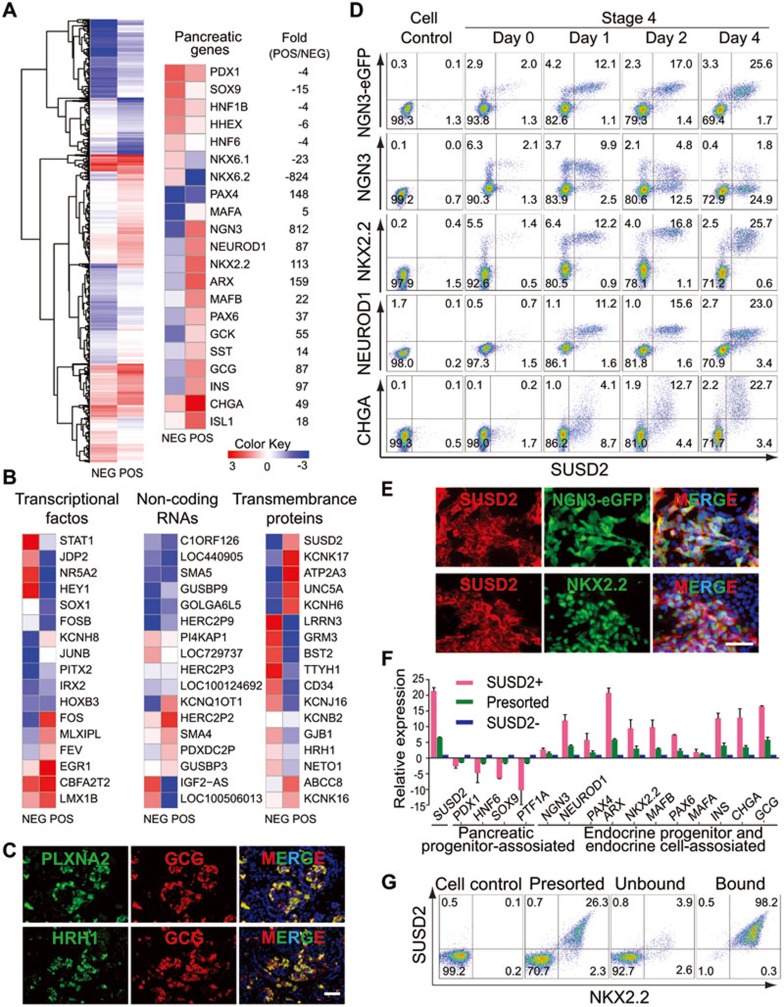Figure 6.
Gene profiling of NGN3-eGFP+ cells identified SUSD2 as a novel surface marker for endocrine progenitors and early endocrine cells. (A) Hierarchical clustering of 3 976 genes that are differentially expressed in NGN3-eGFP+ and NGN3-eGFP− cells (left). The pancreatic progenitor-associated genes are enriched in NGN3-eGFP− cells; the pancreatic endocrine-associated genes are enriched in NGN3-eGFP+ cells (right). The color scale indicates the normalized expression values. (B) Representative differentially expressed potential transcriptional factors, noncoding RNAs and transmembrane proteins. (C) Section staining demonstrated that both PLXNA2 and HRH1 are specifically expressed in GCG-producing cells, but not INS-producing cells in the 18-week human pancreas. (D) The gene expression dynamics of NGN3-eGFP cells during stage 4, showing the co-expression of SUSD2 and eGFP, and the co-expression of SUSD2 and endocrine-associated proteins, varied over time and by gene. (E) Immunostaining of NGN3-eGFP cell cultures at stage 4 day 4 showed that a high co-localization existed between SUSD2 and NGN3-eGFP and between SUSD2 and NKX2.2. Nuclear staining with DAPI (blue) is shown in the merged images. (F) FACS-based gene expression analysis further confirmed the enrichment of endocrine-associated genes in SUSD2+ cells and the enrichment of pancreatic progenitor-associated genes in SUSD2− cells (mean ± SEM, n = 3). (G) Flow cytometry analysis showed that NKX2.2+ cells were highly enriched in the bound fraction from the MACS experiments using an anti-SUSD2 antibody. Cells at the end of stage 1 were used as cell control. Abbreviations: POS (positive); NEG (negative); INS (INSULIN); GCG (GLUCAGON); CHGA (CHROMOGRANIN A); SST (SOMATOSTATIN); PLXNA2 (PLEXIN A2); HRH1 (HISTAMINE H1 RECEPTOR).

